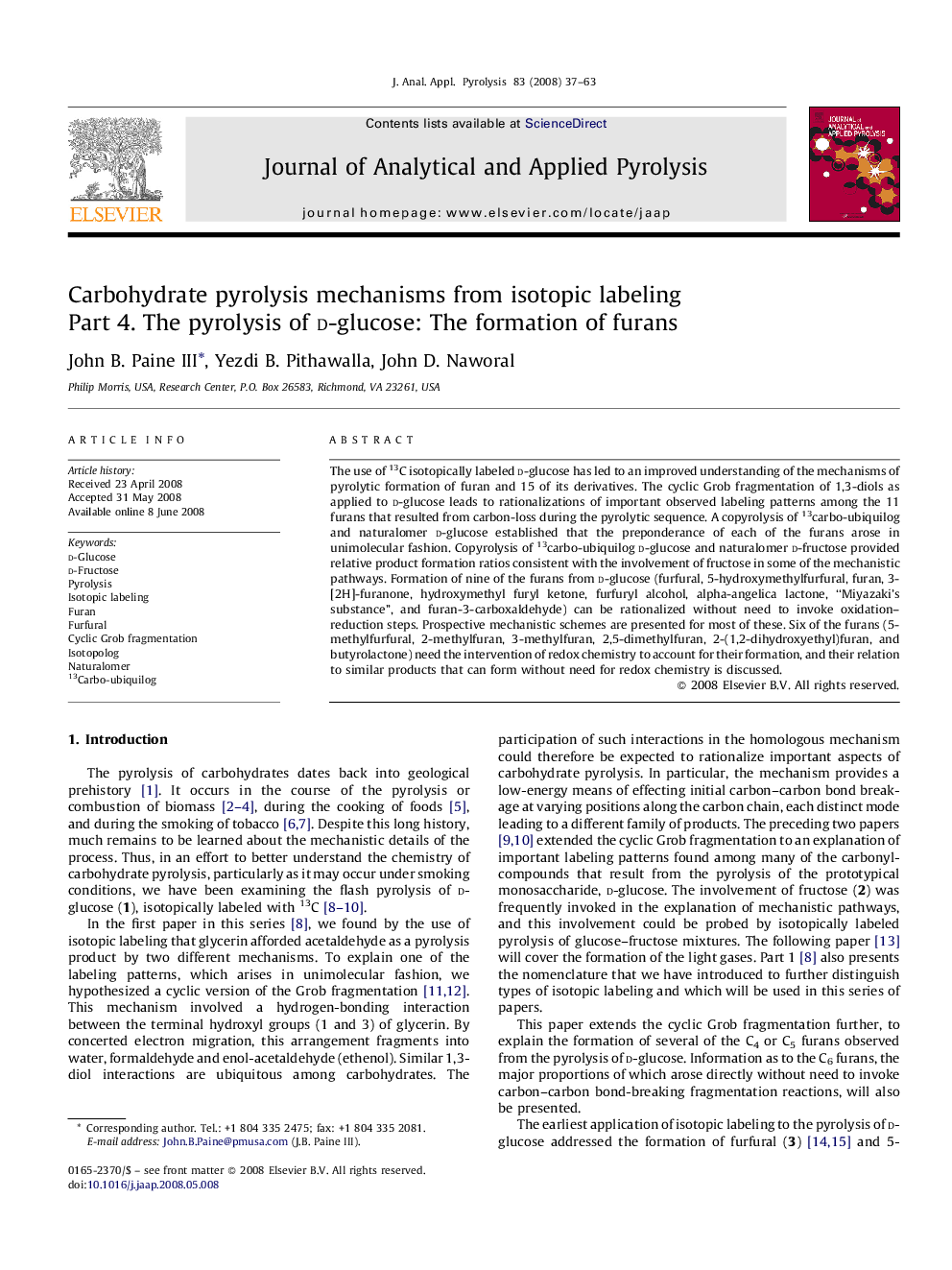| Article ID | Journal | Published Year | Pages | File Type |
|---|---|---|---|---|
| 1198105 | Journal of Analytical and Applied Pyrolysis | 2008 | 27 Pages |
The use of 13C isotopically labeled d-glucose has led to an improved understanding of the mechanisms of pyrolytic formation of furan and 15 of its derivatives. The cyclic Grob fragmentation of 1,3-diols as applied to d-glucose leads to rationalizations of important observed labeling patterns among the 11 furans that resulted from carbon-loss during the pyrolytic sequence. A copyrolysis of 13carbo-ubiquilog and naturalomer d-glucose established that the preponderance of each of the furans arose in unimolecular fashion. Copyrolysis of 13carbo-ubiquilog d-glucose and naturalomer d-fructose provided relative product formation ratios consistent with the involvement of fructose in some of the mechanistic pathways. Formation of nine of the furans from d-glucose (furfural, 5-hydroxymethylfurfural, furan, 3-[2H]-furanone, hydroxymethyl furyl ketone, furfuryl alcohol, alpha-angelica lactone, “Miyazaki's substance”, and furan-3-carboxaldehyde) can be rationalized without need to invoke oxidation–reduction steps. Prospective mechanistic schemes are presented for most of these. Six of the furans (5-methylfurfural, 2-methylfuran, 3-methylfuran, 2,5-dimethylfuran, 2-(1,2-dihydroxyethyl)furan, and butyrolactone) need the intervention of redox chemistry to account for their formation, and their relation to similar products that can form without need for redox chemistry is discussed.
